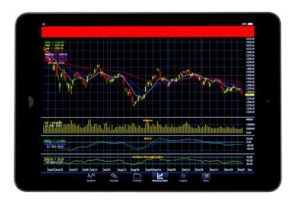Different Trading Platforms And Their Advantages
For the organization of a productive workflow and the effective implementation of trading strategies, the fundamental factor is the choice of a platform for trading in the Forex market. A platform is a technological core in a trader’s work. As practice shows, almost always the choice falls on universal tools.
Types and Features of Trading Platforms
Platforms are divided into three main groups:
- Client Platforms.
- Web Traders.
- Mobile Platforms.
For constant total control, many of the traders use all the listed types of solutions for their trading account.
Depending on the type, platforms have differences in functionality and specificity of the application. Since trading on the exchange implies maximum concentration and requires a thorough approach to decision-making, a trader needs to equip a full-fledged workstation. The web versions of trading platforms have much less functionality and imply more intermediate control and adjustments in the trading process, compared to the mobile versions of the platforms.
The features of trading platforms mainly include executing different transactions and the assistance of additional tools and charts that make the whole trading process easier. Inside these platforms, you will not be able to claim bonuses – this should be done in advance. So, in simple words, any bonus that will give you additional funds for trading, like the bonus XM broker offers for instance, needs to be obtained on the website immediately.
MetaTrader 4
MetaTrader 4 trading platform is designed for trading Forex and futures. With this platform, traders can analyze financial markets, perform complex trading operations, launch trading robots (experts) and copy transactions of other traders. It was developed by MetaQuotes Software Corp in 2005.
MT4 is the most widespread and functionally developed custom platform, that is, it has the widest range of proprietary indicators, advisors and robots. To describe the tools used for MT4, you need to write a series of articles or even a whole book. All this speaks of the incredible popularity of this platform. There is no doubt that this type of terminal requires the greatest attention in the review and extensive structural analysis of its characteristics and capabilities.
MetaTrader 5
MetaTrader 5 is a multi-asset platform that allows you to trade Forex, stocks and futures. It offers excellent tools for complex price analysis, using algorithmic trading applications (trading robots, advisor) and copying trading. The first official
MetaTrader 5 is the next generation of MetaTrader 4 from the same MetaQuotes company. Nevertheless, in this case, we are provided with a slightly different product – with its own programming language MQL5, as a result of which we will not be able to use the custom heritage from the previous version that has been developed over the years, namely MT4 what became, in our opinion, the fundamental factor in why the majority of traders did not switch to the new version of MetaTrader.
In addition, initially, the developers focused on improvements, and obvious shortcomings were left without due attention after the first release and even subsequent updates to MT5. Support for both versions of MetaTrader continues in full. As a result, traders have access to two versions of a feature-rich and highly customizable trading platform that share most of the basic functionality in common.
cTrader
cTrader is a trademark of the platform issued by the Cypriot company Spotware Systems. The platform has five synchronized versions. The state-of-the-art platform system provides many types of alerts, tickets describing the trader’s actions, a map with the analysis of past transactions, over 70 indicators and a market overview with second-level prices.
Today cTrader is the flagship platform of the developer Spotware Systems, which combines 5 types of Forex trading applications. Among which are implemented versions for PC (desktop versions), web-terminal versions and mobile versions of the product.
The platform is known for being specially designed for use with ECN brokers. cTrader has become the platform of choice for several other leading ECN brokers.
The developers and designers have gone to great lengths to make the platform completely intuitive to use. MetaTrader, in comparison with this platform, is much more difficult to understand and, as a result, in terms of functionality, it is also much more complicated.
Key Points
Forex trading platforms evolve with the market. Trading volumes are growing every day and the emergence of new opportunities and tools is a natural reaction to the demands of a dynamically developing market. Today, almost anyone can try themselves in the role of a trader and choose the most suitable trading scheme for themselves. If the goal is to understand the intricacies of trading and gain a truly significant background in the field of trading, then you most likely cannot do without MetaTrader platforms. If such a goal is not pursued, and you want to try trading for the sake of interest with the possibility of successful investments, there are other platforms like cTrader. In one case or another, trial and error is indispensable in any market, and even more so in the foreign exchange market.
low domain rate








